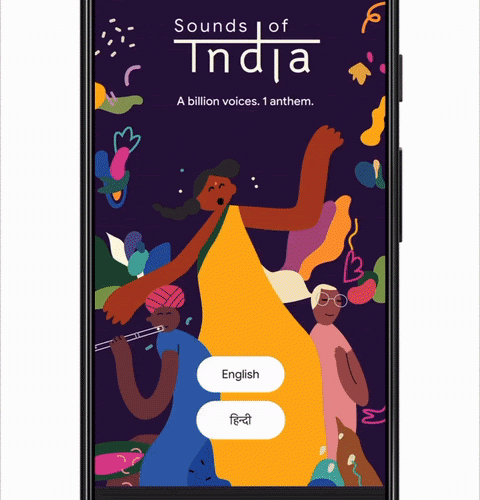Author:
On August 15, India’s Independence Day, it’s customary to sing Jana Gana Mana: the Indian national anthem, originally composed by the poet Rabindranath Tagore and adopted as the anthem after India gained full independence.
This year, together with Prasar Bharati and Virtual Bharat, we offered Indians a new take on the familiar with Sounds of India, an AI-powered web app. Using the app, you sing Jana Gana Mana into your phone, karaoke-style, and it transforms your voice into one of three traditional Indian instruments. The day culminated in a rendition of the national anthem, combining many of the voices that Indians submitted through the app.

The Sounds of India experiment was made possible by machine learning models built with Google’s TensorFlow platform to convert sounds into musical instruments (in this case, the Bansuri, the Shehnai, and the Sarangi).
It was a fun, fresh way for Indians to express their national pride, and showcase the traditions of Indian classical music. But it’s also an opportunity to think about AI’s bigger potential for India’s future—something Google is increasingly focused on.
Last year, we started Google Research India, an AI lab based in Bangalore, to advance AI research and apply AI in solving some of India’s biggest challenges. We reinforced that commitment last month, announcing that leveraging technology and AI for social good would be one of the four focus areasfor our $10 billion Google for India Digitization Fund.
Supporting Indians’ health and wellbeing
In healthcare, we’re using AI to help people manage their health, focusing on wellbeing and a mobile app for cardio-vascular disease prevention. We’re also building on our efforts to apply AI in screening for the eye disease diabetic retinopathy, working with partners like Aravind Eye Hospital and Sankara Nethralaya.
Improving environmental protection and forecasting
Our flood forecasting tools are already being used to send alerts to hundreds of millions of people, and we’re working on computer vision techniques that can analyze satellite imagery to assist with restoring water bodies and protecting forest cover.
Harnessing AI for social good
As part of our commitment to the broader Indian research community, we’re supporting researchers and NGOsusing AI to make further progress on health and environmental problems. Nonprofit ARMMAN and a team from the Indian Institute of Technology Madras are collaborating on a project to predict the risk of expectant mothers dropping out of healthcare programs, while other projects aim to reduce the risk of HIV/Aids, minimize human-wildlife conflict, and improve water release from dams.
One promising initiative is NGO Wadhwani AI’s work using AI to provide timely, local pest management advice to farmers. With a grant from Google.org’s AI Impact Challenge—and support from our Launchpad Accelerator— Wadhwani AI has started to roll out their solution to detect bollworm, helping farmers monitor pests, take action, and improve crop yield.
Independence Day is always a time to reflect on both India’s past and its future. We’re looking forward to building on our progress so far, and working with our partners to bring the benefits of AI to many more Indians in years to come.
